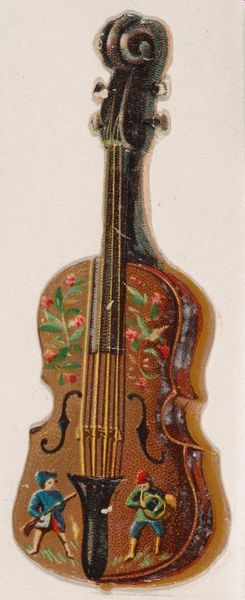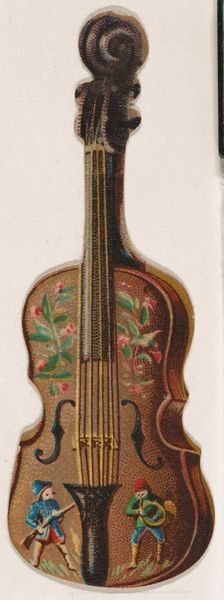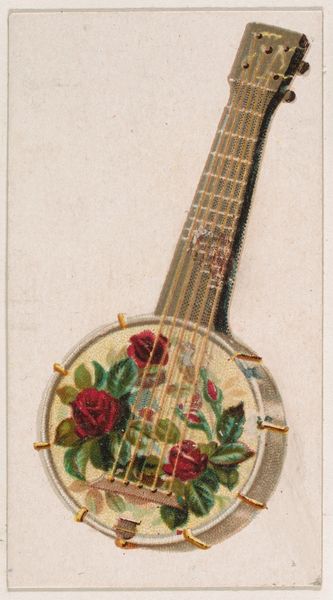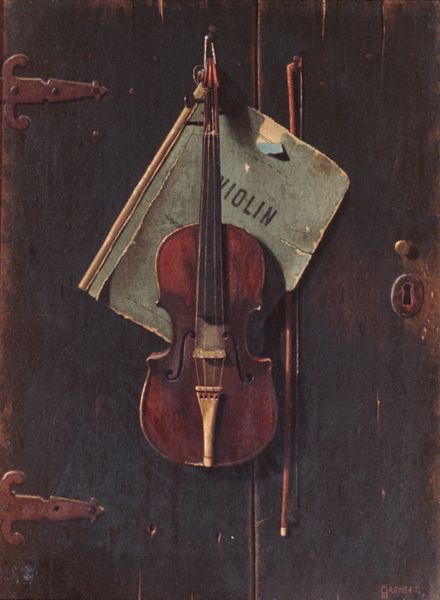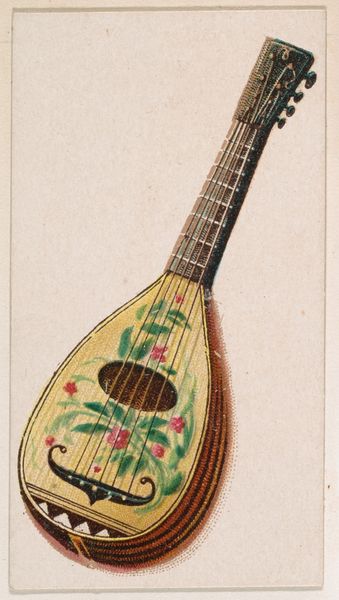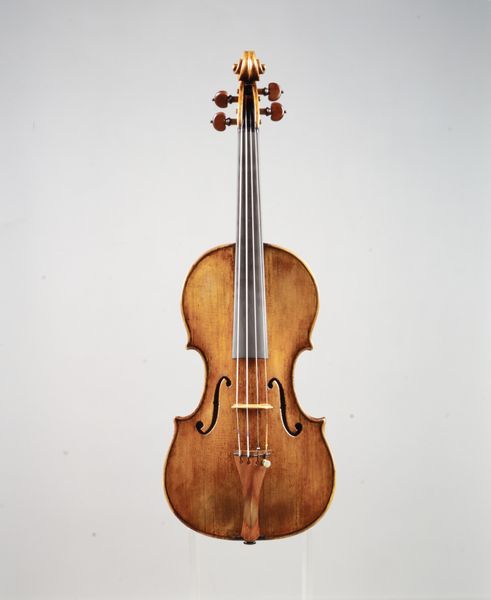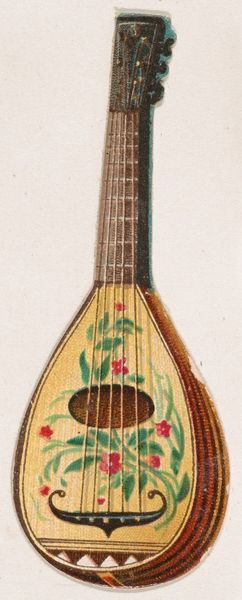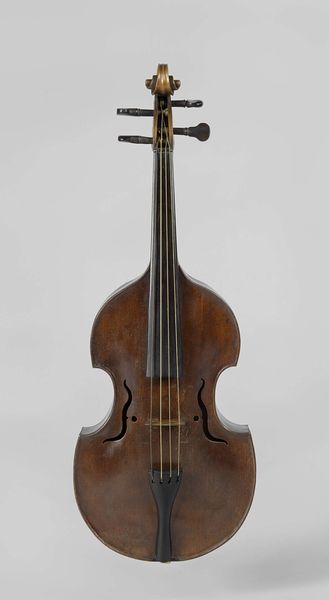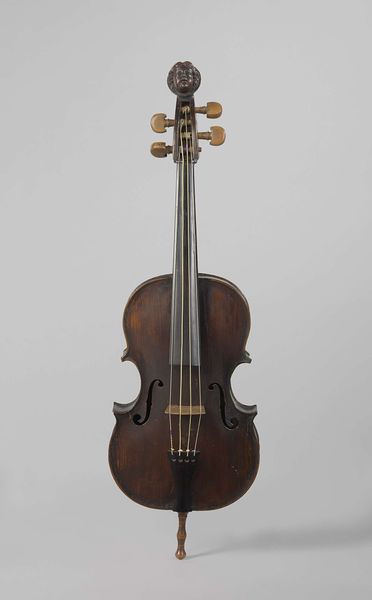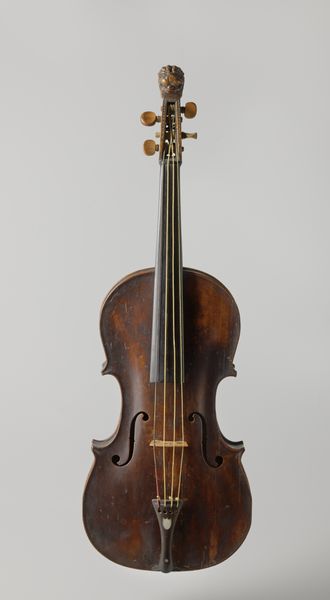
Violin, from the Novelties series (N228, Type 5) issued by Kinney Bros. 1889
0:00
0:00
drawing, print
#
drawing
# print
#
figuration
#
coloured pencil
#
genre-painting
#
watercolor
Dimensions: Sheet: 2 7/8 × 1 9/16 in. (7.3 × 4 cm)
Copyright: Public Domain
Curator: What an intriguing object! This is a trade card produced around 1889 by the Kinney Brothers Tobacco Company, part of their "Novelties" series. These cards, featuring chromolithographic prints, were inserted into cigarette packages as promotional items. Editor: It's wonderfully bizarre! The form of the violin itself is rather elegant, almost baroque in its curves and those little floral embellishments along its body, but those miniature figures strike a jarring note. It's whimsical, in an unsettling sort of way. Curator: Trade cards served a distinct purpose within the burgeoning consumer culture of the late 19th century. They were a form of advertising, yes, but also circulated as collectibles. The images had to be eye-catching. The Kinney Brothers specifically marketed to working class consumers and deployed such genre scenes to enhance feelings of home and stability while enticing consumer desires. Editor: You see, it's the juxtaposition of elements that I find so fascinating. The precision and classical allusions inherent in the violin form contrast sharply with the miniature genre scene unfolding on its surface. Look at those little men: what are they doing? The narrative is delightfully ambiguous. The overall impression is that of a playful collage of elements that shouldn’t necessarily work together, but do. Curator: Precisely! The use of these genre scenes connects consumer desire with elevated art forms and familiar leisure activities, thus making their brand more acceptable to those who wouldn't have considered such things appropriate. Consider too that tobacco consumption had expanded across social classes: It’s clever branding, really. Editor: There is something undeniably magnetic about the colour palette, isn’t there? The earthy browns of the violin’s body are punctuated by those little bursts of red and green in the floral pattern, and then those striking pops of blue in the clothing of one of the little figures, which only amplifies the scene. Curator: Well, from a social and cultural standpoint, it reveals the democratization of consumer products at that moment in American history. The mass distribution of such chromolithographs represents both the growth of popular culture, and also its insidiousness, as such commodities began normalizing addictive and even unhealthy habits in daily life. Editor: Absolutely! So, although initially its conflicting visual language was disturbing, this card is much richer and multifaceted than I first understood. Curator: And that, I think, is why it has survived as a significant artifact—one illustrating the intersection of art, commerce, and the shaping of modern culture.
Comments
No comments
Be the first to comment and join the conversation on the ultimate creative platform.
